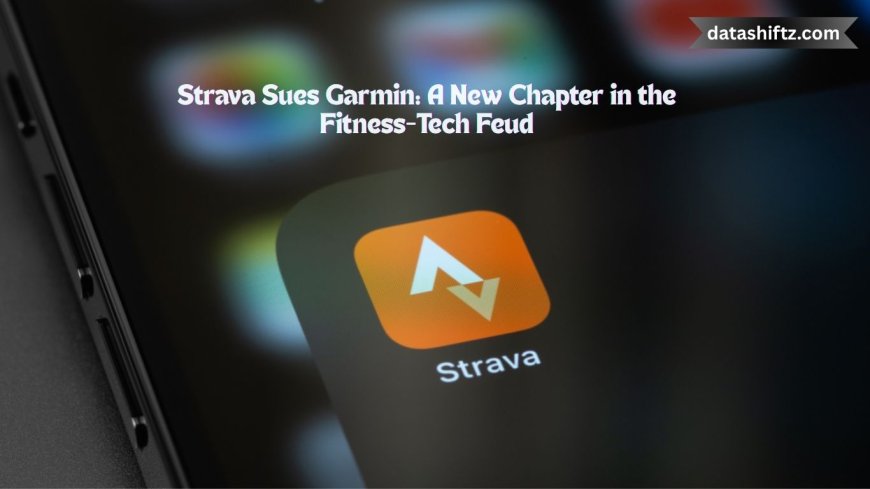Strava Sues Garmin: A New Chapter in the Fitness-Tech Feud

In a dramatic turn of events, Strava — the social fitness platform beloved by athletes around the world — has filed a lawsuit against one of its closest partners, Garmin. The conflict strikes at the heart of what makes these platforms so intertwined: the features that help users track, compare, and share performance data. The lawsuit, filed in the U.S. District Court for the District of Colorado on September 30, 2025, accuses Garmin of infringing several patents and breaching a longstanding cooperation agreement.
Below is a deep dive into what we know so far — from the technical claims and legal maneuvers to what it could mean for users.
What Is Strava Accusing Garmin Of?
The crux of Strava’s complaint centers on two main pillars: Segments and Heatmaps / Popularity Routing.
Patent Claims and Alleged Infringement
| Patent / Feature | Patent Filed / Granted | What It Covers | Garmin’s Alleged Infringement / Defense |
|---|---|---|---|
| Segments | Filed 2011, granted 2015 (U.S. Patent No. 9,116,922) | A system allowing users to define route sections (segments) and compare performance times (leaderboards) | Strava contends Garmin built and expanded a “Garmin-branded segments” system beyond the permitted scope of their 2015 cooperation agreement. |
| Heatmaps / Route Popularity | Filed 2014 / granted 2016 (U.S. Patent 9,297,651) and filed 2016 / granted 2017 (U.S. Patent 9,778,053) | Systems that aggregate user activity to visualize popular routes (“heatmaps”) and suggest routes based on popularity data (“popularity routing”) | Strava claims Garmin’s Trendline, Courses, and route suggestion features infringe these patents. Garmin may counter that it had versions of heatmaps already in Garmin Connect as early as 2013 — predating Strava’s filing. |
In addition to the patent claims, Strava alleges that Garmin breached a Master Cooperation Agreement (MCA) signed in 2015, which allowed Garmin to utilize Strava Live Segments under certain constraints. According to Strava, Garmin violated terms by studying and re-implementing features independently under Garmin’s own branding.
Strava is seeking both monetary damages and a permanent injunction that would prohibit Garmin from selling or distributing devices or software that incorporate the disputed features. The complaint frames the requested injunction as necessary because monetary compensation would not adequately remedy harms to platform differentiation, network effects, and user loyalty.
What Sparked This Now — Beyond Patents
While the patent and contract claims are the formal basis for the suit, some underlying tensions helped bring the dispute to a head.
API Access & Branding Requirements
In July 2025, Garmin introduced new developer guidelines for its API partners (like Strava), requiring the Garmin logo to appear on all activity posts, graphs, maps, sharing cards, and other visual elements. The deadline: November 1, 2025. Garmin allegedly threatened to cut off API access for noncompliance.
Strava’s leadership described the requirement as “blatant advertising” and a degradation of user experience. They argued that embedding branding in users’ activity displays is different from a simple attribution, and they pushed back — unsuccessfully — through negotiations over several months.
Strategic Positioning & Competitive Overlap
In recent years, Garmin has expanded into platform and software features that encroach on what Strava offers — for example, route planning, heatmap-based trails, and social-driven analytics.The timing of the lawsuit coincides with the launch of Garmin’s “Trails+” feature, which may push Garmin deeper into competing directly with Strava’s offerings.
Compounding the friction, Strava had previously implemented sweeping API changes (in 2024) that disrupted some third-party integrations, incurring backlash from developers and partners.
Some analysts suggest the move may also tie into Strava’s long-term monetization and platform control strategy — perhaps even ahead of any IPO ambition.
What This Means for Users
From a user’s perspective, the drama may feel distant — but there are some risks and impacts to monitor.
What Strava says will not change:
-
Garmin users should still be able to sync their data to Strava during litigation. Strava has stated that it does not intend to disrupt the existing user experience or data flows.
-
Features and devices in use today will continue working, at least until court actions or injunctions intervene.
Possible downstream risks:
-
If a court grants an injunction, Garmin may have to disable or remove segment or heatmap functions — or halt sales of devices with those functions.
-
Garmin might retaliate by limiting or systematically throttling Strava integration or API access, putting user syncs at risk.
-
The validity of the patents themselves may be challenged (e.g. via inter partes review), especially given prior art of heatmaps existing earlier than Strava’s recorded filings.
-
Users may feel caught in the crossfire, especially those heavily invested in both ecosystems.
Dates & Milestones
-
2013 — Garmin reportedly implements a version of heatmaps / route popularity features in Garmin Connect (before Strava’s patent filings).
-
2014 — Garmin launches its own “Segments” system on Edge bikes.
-
April 8, 2015 — Strava and Garmin enter into the Master Cooperation Agreement to license Strava Live Segments under restricted terms.
-
June–July 2025 — Strava formally notifies Garmin of alleged infringement.
-
July 1, 2025 — Garmin issues new API branding guidelines requiring embedded Garmin logo on display elements.
-
September 30, 2025 — Strava files the formal lawsuit (Case No. 1:25‑cv-03074) in Colorado.
Final Thoughts
The Strava vs. Garmin lawsuit marks a turning point in how fitness and tech platforms may co-exist (or not). What was once a symbiotic relationship — where Garmin devices feed data into Strava’s social and analytics layers — now risks becoming a battleground over control, branding, and intellectual property.
At its core, Strava argues that its innovations built the very features that users love (segments, heatmaps) and that Garmin improperly leveraged access to replicate and compete. Garmin, on the other hand, may lean on prior use, patent invalidation, or limits of contract scope as defenses.
For users, the outcome matters greatly: a split between platforms, disabled features, or disrupted syncs would affect experience profoundly. But given the complexity of patent litigation and contract interpretation, resolution may take months or even years.





























